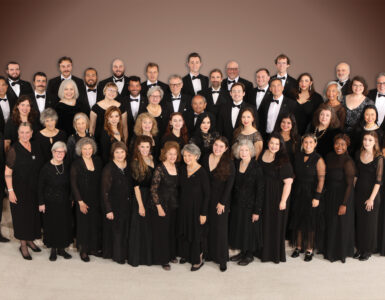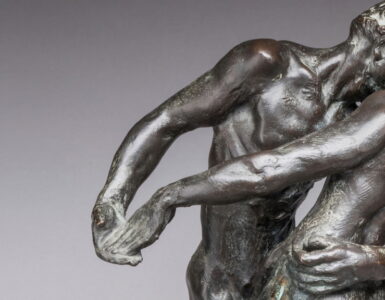
The Museum of Contemporary Art presents Naked Hollywood: Weegee in Los Angeles, the first museum survey devoted to the work that the tabloid photographer known as Weegee produced in Southern California, including his 1953 photo-book Naked Hollywood. The exhibition will be on view at MOCA Grand Avenue from November 13, 2011, through February 27, 2012.
In 1947, Weegee relocated from New York City to Los Angeles, abandoning the grisly crime scenes for which he was best known and training his camera instead on Hollywood stars, strip tease artists, costume shops, and naked mannequins, sometimes distorted through trick lenses and combination printing.
“Now I could really photograph the subjects I liked,” said Weegee of his newfound career in Los Angeles, “I was free.”
MOCA’s exhibition follows the photographer’s lead by documenting the lurid, irresistible undersides of stardom, fandom, commerce, and self-promotion in mid- century Los Angeles. Because Weegee did not originally intend his photographs to be presented as high art in museums, the exhibition presents his photographs with their crop marks, notes to the printer, and hand-inked captions in tact. In addition to roughly 200 photographs, many of which have never before been shown or known, the exhibition comprises Weegee’s related work as an author, filmmaker, and photo- essayist.
Determined to make it in Hollywood, the photographer served as a technical advisor and played bit parts in studio films, but was rarely credited. Through his own lens however, Weegee portrayed himself as the most famous photographer in the world.

Curated by Richard Meyer, associate professor of art history and fine arts and director of The Contemporary Project at USC, Naked Hollywood: Weegee in Los Angeles is presented in conjunction with Pacific Standard Time: Art in L.A. 1945-1980, a collaboration of more than 60 cultural institutions across Southern California coming together for the first time to celebrate the birth of the L.A. art scene.
“Weegee noticed things that other photographers ignored or dismissed,” said Meyer. “At Hollywood premieres, he focused not only on the arrival of the movie stars, but on the faces of fans in the crowd as well as on the signs for pawn shops and funeral parlors near where they stood. By capturing perspectives otherwise dismissed as insignificant, Weegee teaches us how to look at Hollywood—and at photography—in a different light.
“The unveiling of so many of Weegee’s Los Angeles photographs makes this is an historic exhibition,” said MOCA Director Jeffrey Deitch. “Weegee leads us by his lens down red carpets and through Skid Row, offering up a unique portrait of mid-century Los Angeles.”
An accompanying book, Naked Hollywood: Weegee in Los Angeles, introduced and edited by exhibition curator Richard Meyer, will be published by Rizzoli with MOCA and the International Center of Photography.
Naked Hollywood: Weegee in Los Angeles
The Museum of Contemporary Art, Los Angeles (MOCA)
Nov 13, 2011—Feb 27, 2012
MOCA Grand Avenue
Naked Hollywood: Weegee in Los Angeles is part of Pacific Standard Time. This unprecedented collaboration, initiated by the Getty, brings together more than sixty cultural institutions from across Southern California for six months beginning October 2011 to tell the story of the birth of the L.A. art scene.
The works in this exhibition are drawn from the Weegee Archive at the International Center of Photography, New York.
Generous support is provided by the Annenberg Foundation.
PACIFIC STANDARD TIME: ART IN L.A. 1945 – 1980
Pacific Standard Time is a collaboration of more than sixty cultural institutions across Southern California, coming together for six months beginning in October 2011 to tell the story of the birth of the Los Angeles art scene and how it became a major new force in the art world. Each institution will make its own contribution to this grand-scale story of artistic innovation and social change, told through a multitude of simultaneous exhibitions and programs. Exploring and celebrating the significance of the crucial post-World War II years through the tumultuous period of the 1960s and 70s, Pacific Standard Time encompasses developments from L.A. Pop to post-minimalism; from modernist architecture and design to multi-media installations; from the films of the African American L.A. Rebellion to the feminist activities of the Woman’s Building; from ceramics to Chicano performance art; and from Japanese American design to the pioneering work of artists’ collectives. Initiated through $10 million in grants from the Getty Foundation, Pacific Standard Time involves cultural institutions of every size and character across Southern California, from Greater Los Angeles to San Diego and Santa Barbara to Palm Springs. Pacific Standard Time is an initiative of the Getty. The presenting sponsor is Bank of America.
As part of Pacific Standard Time, MOCA will also present Under The Big Black Sun: California Art 1974-1981, curated by MOCA Chief Curator Paul Schimmel, on view October 1, 2011-February 13, 2012, at The Geffen Contemporary at MOCA. Featuring works by more than 130 artists, this exhibition is the most comprehensive survey to examine the exceptional diversity of art practice in California during the mid- to late 1970s.
Under the Big Black Sun: California Art 1974–1981 is part of Pacific Standard Time. This unprecedented collaboration, initiated by the Getty, brings together more than sixty cultural institutions form across Southern California for six months beginning October 2011 to tell the story of the birth of the L.A. art scene.
Pacific Standard Time is an initiative of the Getty. The presenting sponsor is Bank of America.
Generous support for the exhibition and catalogue provided by the Getty Foundation, Kathi and Gary Cypres, and Mandy and Cliff Einstein.
Additional support provided by Lenore and Bernard Greenberg, The Pasadena Art Alliance, The Cecile and Fred Bartman Foundation, and Lisa Schiff.
In-kind media support is provided by KCRW 89.9 FM and Los Angeles magazine.
THE MUSEUM OF CONTEMPORARY ART, LOS ANGELES (MOCA)
Founded in 1979, MOCA’s mission is to be the defining museum of contemporary art. The institution has achieved astonishing growth in its brief history—with three Los Angeles locations of architectural renown; more than 12,000 members; a world-class permanent collection of nearly 6,000 works international in scope and among the finest in the nation; hallmark education programs that are widely emulated; award-winning publications that present original scholarship; and groundbreaking monographic, touring, and thematic exhibitions of international repute that survey the art of our time. MOCA is a private not-for-profit institution supported by its members, corporate and foundation support, government grants, and retail and admission revenues. MOCA Pacific Design Center is open 11am to 5pm Tuesday through Friday; 11am to 6pm on Saturday and Sunday; and closed on Monday. Admission to MOCA Pacific Design Center is always free. For 24- hour information on current exhibitions, education programs, and special events, call 213/626- 6222 or access MOCA online at moca.org.
BECOME A MOCA MEMBER TODAY!
A MOCA membership provides insider access to the world of contemporary art and the artists, collectors, and curators who make Los Angeles one of the most innovative and active art centers worldwide.
Call the membership office at 213/621-1794 or or email membership1@moca.org.








